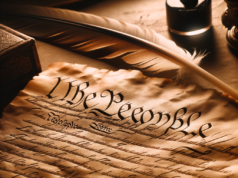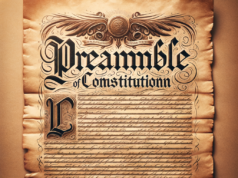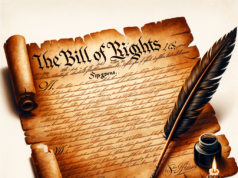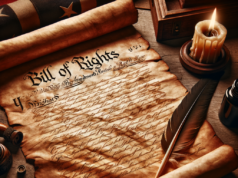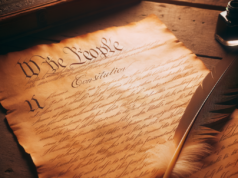
The 14th Amendment of the Constitution: Protecting Equal Rights for All
The 14th Amendment of the Constitution was one of the most important amendments ever passed in United States’ history. Its ratification gave constitutional protection to basic civil rights and has impacted countless court cases and the lives of millions of Americans. This amendment has been central in the fight for equality and protection against discrimination. In this article, we will explore the history and impact of the 14th Amendment, including recent updates on the topic using government resources.
The History of the 14th Amendment
The 14th Amendment was adopted in July 1869, as part of the Reconstruction Amendments after the Civil War. This amendment addressed important issues related to legal equality, citizenship, due process and equal protection under the law. The amendment was passed with the intent of protecting the rights of all people, regardless of skin color or ethnicity, from discrimination by states.
The language of the 14th Amendment is divided into five sections, which we will explore in more detail below:
Section 1: Citizenship, Due Process and Equal Protection
One of the most important sections of the 14th Amendment is Section 1, which has been widely used to strike down state and local laws that discriminate against minorities. This section guarantees equal protection under the law for all people. It states that “no State shall make or enforce any law which shall abridge the privileges or immunities of citizens of the United States; nor shall any State deprive any person of life, liberty, or property, without due process of law; nor deny to any person within its jurisdiction the equal protection of the laws.”
This section was meant to ensure that all people living within the United States were granted equal protection under the law. In doing so, it essentially overruled several Supreme Court cases, including the infamous Dred Scott v. Sandford case, which denied citizenship to African Americans.
Section 2: Apportionment of Representatives
Section 2 of the 14th Amendment addressed the issue of apportionment and representation in Congress. It provided that each state’s representation in the House of Representatives would be based on their total population, which includes all individuals regardless of race or ethnicity. However, this section of the amendment became nullified by Section 2 of the 15th Amendment, which granted African American men the right to vote.
Section 3: Disqualification from Office
Section 3 of the amendment bars anyone from holding public office in the United States if they had previously sworn an oath of allegiance to the U.S. Constitution but then later engaged in insurrection or rebellion against it. It was enacted in response to the rampant defiance of Southern states during the early years of Reconstruction and was meant to prevent former Confederate leaders from regaining power.
Section 4: Public Debt
Section 4 of the amendment provided for the validity of the public debt of the United States and prohibited states from repudiating any debts owed. This section was a response to fears that some Southern states might attempt to secede again and repudiate any debts accumulated as part of the war.
Section 5: Enforcement
Section 5 of the 14th Amendment authorized Congress to enforce the provisions of the amendment through legislation. This section of the amendment has been critical in the vast array of civil rights legislation that has been passed since its adoption.
The Impact of the 14th Amendment
The 14th Amendment has been pivotal in shaping the legal landscape of the United States since its ratification. The language of the amendment has been interpreted by the Supreme Court in countless cases and has helped provide protections and rights to millions of Americans.
To truly comprehend the scope of the 14th Amendment, one must consider a few landmark cases where it played a significant role.
Brown v. Board of Education (1954)
Perhaps the most famous and significant case that relied on the 14th Amendment was Brown v. Board of Education. This case challenged the “separate but equal” doctrine that had been established in Plessy v. Ferguson (1896) which had upheld segregation in schools. The Supreme Court unanimously ruled that segregation in public schools was unconstitutional and violated the Equal Protection Clause of the 14th Amendment. This decision was monumental in the fight against racials segregation, changing the perception of African Americans in the U.S. forever.
Roe v. Wade (1973)
Another case that relied on the 14th Amendment was Roe v. Wade. This case challenged a Texas law that prohibited abortions, stating that it was unconstitutional and violated the Due Process Clause of the 14th Amendment. The Supreme Court held that the right to privacy, though not explicitly stated in the Constitution, was protected by the Due Process Clause of the 14th Amendment, and thus invalidated the ban on abortion. This ruling was a milestone decision for women’s rights and reproductive freedom.
Obergefell v. Hodges (2015)
In 2015, the Supreme Court issued another important decision in Obergefell v. Hodges, which challenged that same-sex couples had a right to marry. The Court held that the 14th Amendment guarantees equal protection under the law for all individuals, including the right to marry, regardless of sexual orientation. This ruling broadened the legal recognition of marriage, extending the protections afforded to married partners to same-sex couples.
The 14th Amendment and Current Events
In recent events, the 14th Amendment has again come under debate. One of the most significant recent events related to the amendment is in response to the proposed Citizenship Amendment Act (CAA) in India. The Indian Citizenship Act has been seen by some to have violated the very spirit of similar due process rights given under the 14th Amendment. The Citizenship Amendment Act would grant citizenship to a controversial group of illegal immigrants entering India, excluding Muslims. In addition to violating several core beliefs of the Indian Constitution, the Citizenship Amendment Act has been challenged in several courts, which has prompted many constitutional scholars to draw parallels between the current situation in India and past injustices in the United States.
In summary, the 14th Amendment has played a significant role in the civil rights movement, ensuring that all peoples are protected under the law. This amendment has been included in many important court cases throughout history and has created a framework through which discrimination is prohibited, life, liberty, and property are protected, and legal due process is available for all citizens. As demonstrated by recent events with the Citizenship Amendment Act, the protection this amendment offers should not be taken for granted and must continue to be been defended to ensure equal rights for all individuals under the law.
Summary of the Original Fourteenth Amendment to the United States Constitution
The Fourteenth Amendment to the United States Constitution was ratified on July 9, 1868, and mainly ensured former slaves were protected by constitutional rights within the country.
Section 1
Section 1 stated that all persons born or naturalized in the United States were citizens, thus states could not “deprive any person of life, liberty, or property, without due process of law; nor deny to any person within its jurisdiction the equal protection of the law.”
Section 2
The original section of the Fourteenth Amendment guaranteed voting rights to all male citizens 23 years of age and older. This section was amended by the Twenty-Sixth Amendment and gave voting rights to any person (regardless of gender) 18 years of age or older.
Section 3
This section of the Fourteenth Amendment states that no person can hold a position of office, civil or military, under the United States or under any State if they were engaged in insurrection or rebellion against the United States. This section mainly applied to persons in the office that supported confederate states. The disability could be removed if Congress reached a two-thirds vote.
Section 4
This section of the Fourteenth Amendment stated that no debts for the suppression of insurrection or rebellion could be questioned. The section also states that the United States was not responsible for debts from the loss or emancipation of any slave. These debts were illegal and void.
Section 5
This section simply states that Congress has the ability to enforce the provisions of this Article with appropriate legislation.
The Need for the Fourteenth Amendment
The Fourteenth Amendment was needed because provisions of the Bill of Rights were not enforceable against state governments that denied these basic civil liberties. For example, in 1835 during Barron v. Baltimore, the U.S. Supreme Court ruled that the Bill of Rights was only enforceable against the actions of the federal government.
The Fourteenth Amendment to the United States Constitution thus ensured due process and gave federal courts jurisdiction to the case if a state denied basic civil liberties.
The Fourteenth Amendment to the United States Constitution also allowed a person to sue the federal court if a state law regulation denied “equal protection of the laws.” For example, during the famous caseBrown v. Board of Education (1954), the federal courts ended segregation in public schools because equal protection was denied by the Kansas school’s adoption of unconstitutional operating standards.
Minimum Standards under the Fourteenth Amendment of the United States Constitution
The Fourteenth Amendment allows a federal court to hear cases that violate minimum standards under the Amendment. Brown v. Board of Education deprived students of equal protection because the schools were segregated. However, a similar case shows the federal court’s inability to rule on more complex issues. In the caseSan Antonia Independent School District v Rodriguez (1973), the U.S. Supreme Court ruled that the unequal quality between rich and poor communities and their school districts is not unconstitutional. The Court ruled that “The Equal Protection Clause does not require absolute equality or precisely equal advantages.”
Sources:
1.https://www.uscourts.gov/EducationalResources/ConstitutionResources/LegalLandmarks/JudicialInterpretationFourteenthAmmendment.aspx
2. https://www.archives.gov/exhibits/charters/constitution_amendments_11-27.html



